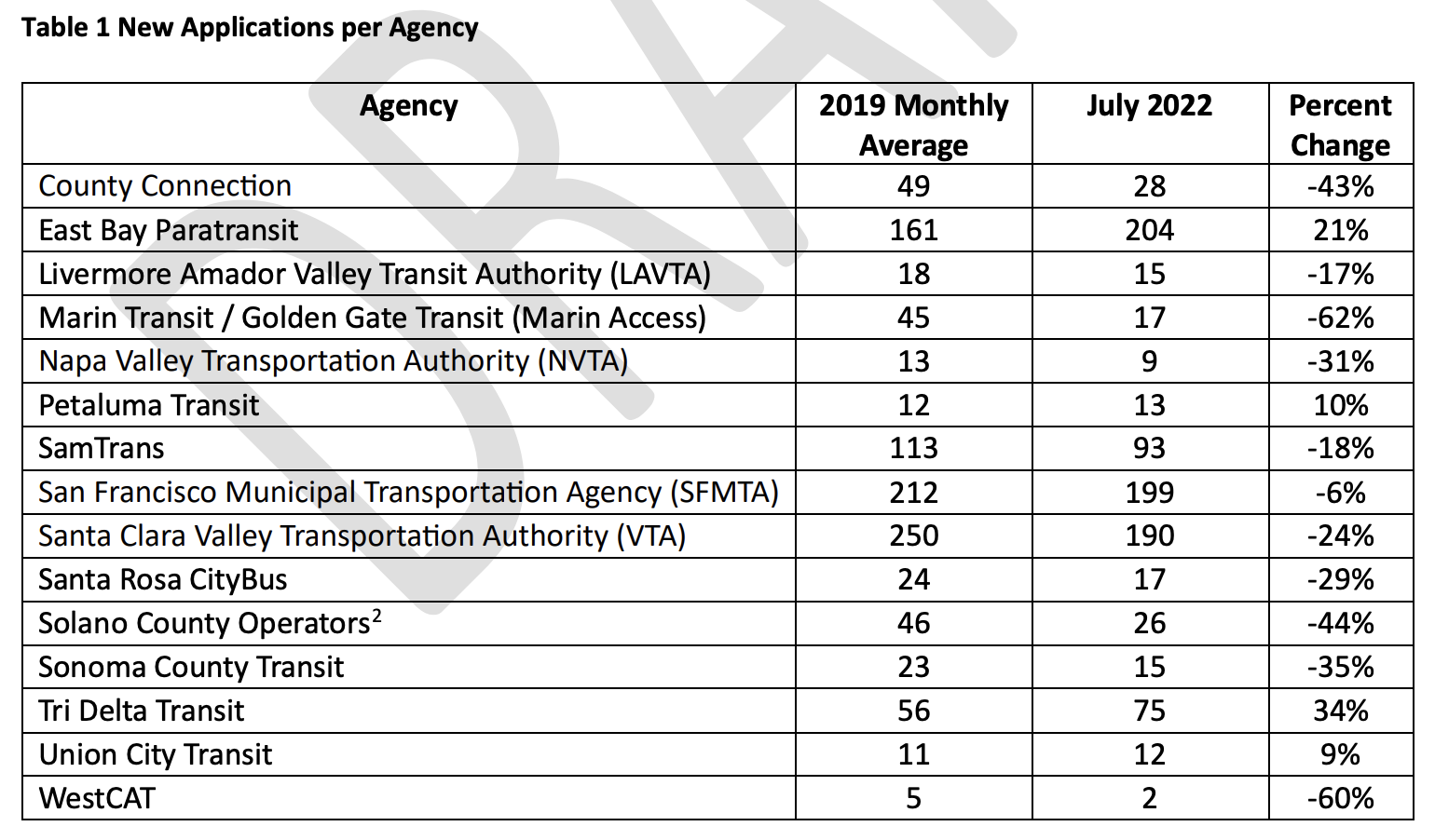Streamlining Paratransit Recertification: Why AB 1250 Matters for People with Disabilities
The Governor recently signed AB1250 (Papan), a new bill to streamline the paratransit recertification process.
This bill reduces a longstanding inconvenience for paratransit users. By simplifying the recertification process, people with permanent disabilities won't have to go through lengthy processes to prove their disability over and over again.
Paratransit recertification process poses barriers for riders
Required by the Americans with Disabilities Act (ADA), paratransit is a shared ride public service which broadly serves people with disabilities and older adults based on an individual's “ability to use fixed route transit in his or her own circumstances.” It is operated by local transportation agencies as a complementary service to fixed route transit. Under Federal law, paratransit is required to serve areas within 3/4 mile of an operating bus route or rail station.
Paratransit users must periodically recertify with their local transit agency in order to continue being eligible for their paratransit or dial-a-ride services. However these recertification procedures often differ from agency to agency. Some use paper applications that are mailed in or dropped off at an office, while others use online options like over the phone interviews. Some agencies also continue the process with an in-person to assess an applicant’s ability to use fixed-route transit.
The need to repeat the recertification process comes with many challenges, including
The need for medical certification, which typically incurs a cost.
Long, not easily accessible forms, especially for people using screen readers.
Difficulty getting to a doctor’s appointment if the individual is not already paratransit-eligible.
For many users, especially those with long-term disabilities, the recertification process has been a burden and barrier. For example, for users of paratransit without a regular doctor or visits that are covered by insurance, medical fees can become a significant challenge.
Changes with AB1250
AB1250 addresses some of these shortcomings by streamlining the recertification process for individuals with a disability that is not expected to improve over time and whose ability to access fixed route transit is not expected to improve over time. This process does not apply to those with temporary disabilities, or when the scope of eligibility is broadened (when a disability worsens and examination is needed to expand eligibility). This still leaves those with temporary disabilities and worsening disabilities to go through the lengthy process to get recertified.
According to the bill text, recertification can only be conducted via a telephone interview, mail-in form, teleconference, or online survey. The bill also limits the information that can be collected to:
Physical address
Mailing address, if different from physical address
Emergency contact
Telephone number
Updated mobility devices
Status of disability, with identification of any worsening of the person’s disability, any additional disability, any changes to the person’s functional abilities, and any changes to the person’s use of an assistive device
First and last name
Date of birth
A press release from Assembly Member Diane Papan states that this new process addresses many of the challenges that are associated with recertification – eliminating repeated in-person medical assessments, documentation, and lengthy review processes.
Next steps to improve recertification process
Christine Fitzgerald, a Citizen Advocate for People with Disabilities, has had Cerebral Palsy since birth and was later diagnosed with early onset Glaucoma as well as several other disabilities related to her advancing years. She adds that the forms should be changed to make sure that anyone can access it for themselves. Those who need large print should be able to have the forms available in large print. It should require accessible design for forms; PDF forms are not universally recognizable, and pose challenges for those who use screen readers. People who need screen readers should also be able to fill out the forms on their own. Agencies can achieve this by adhering to modern communication guidelines such as Web Content Accessibility Guidelines to create a W3C-compliant document (which is fully accessible for text-to-speech).
AB1250 compliments Bay Area transit accessibility initiatives
The improvements in AB1250 complement initiatives moving forward as part of the Bay Area’s Transit Transformation Action Plan (TAP Action 25) to standardize eligibility practices for programs that benefit people with disabilities.
Chloe Dahl is interning for Seamless Bay Area. She serves as a transportation advocate in various youth groups including Safe Routes To School.
Sign up here to get our blog posts sent directly to your email.

